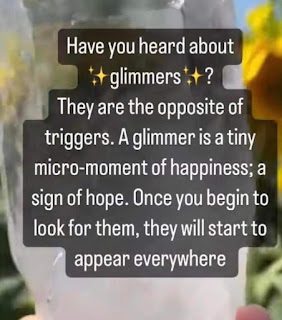Glimmers and Starbursts and Hopeful Endings
You may remember my big summer news: After a particularly nasty fall, I underwent
surgery to replace a very sad hip. I couldn’t
take my walks. I couldn’t go into the woods or see my favorite trees or feed my
favorite turtles. The news was overwhelmingly depressing. I’ve watched
every season of Doc Martin and The Witcher. And you know Whoooo!
And just about that time, a meme made its way to my page,
defining the nature of glimmers. A glimmer is that micro-moment of happiness; a
sign of hope.
So, I decided enough is enough. I pulled out an old story
and made it new again. Working at the desk, while doing my leg exercises,
o! the possibilities!
A month later, I could bike ½ mile (albeit, it’s a PT bike.
But a bike is a bike!)
I walked 45 minutes (albeit, I stopped to practice my
balance, with my trusty cane – Miss Purple Bess – by my side.)
O, big glimmer. My eighth book, this one from Charlesbridge,
is scheduled for Spring 2026!
So how does this relate to our topic on endings? Ending is
such a particularly good concept for me these days. I went to my Doc appt recently.
I'm at the halfway mark. Only 6 more weeks of PT. Endings. And new
beginnings!
In other words, hope is the core ingredient for a satisfying
ending to a story. There are many ways to end a story. There’s the happily ever
after, common in romance stories and other fairy tales. There’s the “the
restoration of honor through sacrifice; the bolstering of friendship and
altruism through earned humility.” As Vaughn Roycroft noted in his article,
Good Story Endings: Happy or Sad, or Something Else?”
There’s the tragic ending, epitomized by Jack’s death in Titanic. And the open ending, when nothing is really resolved, and the murderer seems to have escaped. Then there's the redemption at the end of the story. In each scenario, hope allows the character to move forward, and the possibilities are endless. After Jack died, Rose’s ‘heart lived on' to love again and have a family. Darth Vader found redemption and the rebellion found new hope.
Hope means the
story didn’t end with the tragedy, or even with the ecstasy. It is, in essence,
the beginning to the next chapter – the sequel, if you will.
David Means, author of Two Nurses, Smoking, said, “A good
ending doesn’t answer a question. It opens up the deeper mystery of the story
itself.”
In other words, through dark moments and tragic scenes, and happy reunions, the most memorable ending invites readers to glean meaning from the story and, in so doing, becomes inspired, as noted by Hannah Gullickson in her article, “Imagination and Writing: The “Hopeful Ending” vs. the“Happy Ending”.
And to end this reflection with a starburst: this morning I submitted the revision to my agent.
“Life is amazing. And then it's awful. And then it's amazing
again. And in between the amazing and awful it's ordinary and mundane and
routine. Breathe in the amazing, hold on through the awful, and relax and
exhale during the ordinary. That's just living heartbreaking, soul-healing,
amazing, awful, ordinary life. And it's breathtakingly beautiful.” -- L.R.
Knost
-- Bobbi Miller


Thanks for the reminder that life is full of glimmers if we just tune into each moment.
ReplyDeleteThank YOU, Darlene, for your glimmerings, too!
DeleteHalfway there! I love the idea of an ending being the beginning of a new chapter.
ReplyDelete